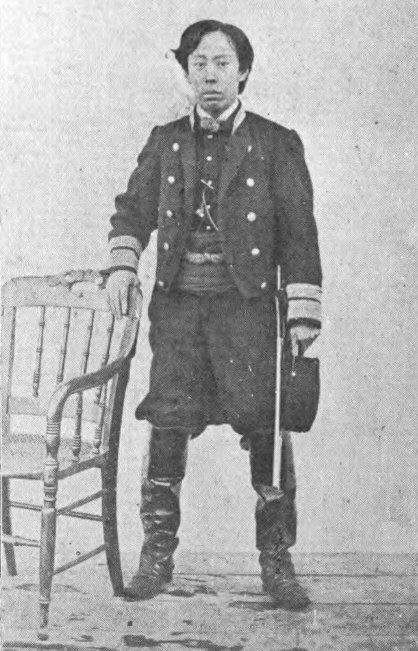 | ||
The Kyoto Shoshidai (京都所司代, Kyōto Shoshidai) was an important administrative and political office in the early modern government of Japan. However, the significance and effectiveness of the office is credited to the third Tokugawa shogun, Iemitsu, who developed these initial creations as bureaucratic elements in a consistent and coherent whole.
Contents
Shogunal deputies during the Kamakura shogunate
The official was the personal representative of the military dictators Oda Nobunaga and Toyotomi Hideyoshi; and it was institutionalized as the representative of the Tokugawa shoguns.
The office was similar to the Rokuhara Tandai of the 13th and 14th centuries. Tandai was the name given to governors or chief magistrates of important cities under the Kamakura shogunate. The office became very important under the Hōjō regents and was always held by a trusted member of the family.
Shogunal deputies during the Tokugawa shogunate
The office was expanded and its duties codified as an office in the Tokugawa shogunate. The shoshidai, usually chosen from among the fudai daimyo, was the shogun's deputy in the Kyoto region, and was responsible for maintaining good relations and open communication between the shogunate and the imperial court. No less important, this official was also tasked with controlling the access of the daimyo to the Court. He was appointed to oversee financial measures and the court, and to ensure the emperor's personal security and for guarding the safety of the court. For example, the shoshidai supported the Kyoto magistrate or municipal administrator (the machi-bugyō) in making positive policy about firefighting for the royal palaces. In this context, working with the shoshidai would have been the administrator of the reigning sovereign's court (the kinri-zuki bugyō) and the administrator of the ex-emperor's court (the sendō-zuki bugyō), both of whom would have been shogunate appointees. He would have been at the head of a network of spies whose quiet task was to discover and report any covert sources of sedition, insurrection or other kinds of unrest.
As Governor-general of Kyoto and the surrounding eight provinces, the shoshidai was responsible for collecting taxes in the home provinces and for other duties attached to this office as well. The municipal administrators of Nara and Fushimi, in addition to Kyoto's municipal governance, the Kyoto deputy (the daikan), and the officials of the Nijō Palace were all subordinate to the shoshidai. He was empowered to hear suits-at-law and he had oversight control of all temples and shrines. The shoshidai had a force of constables (yoriki) and policemen (dōshin) under their command.
In addition to administrative duties, the shoshidai's participation in ceremonial events served a function in consolidating the power and influence of the shogunate. For example, in September 1617, a Korean delegation was received by Hidetada at Fushimi Castle, and the shoshidai was summoned for two reasons (1) for the Koreans, to underscore the importance accoreded the embassy, and (2) for the kuge courtiers in attendance, to make sure that they were properly impressed.
To qualify for this high office, it eventually developed that service as governor of Osaka was a prerequisite. The close, personal link with the shogun was maintained through visits to Edo every five or six years to report directly to the shogun. The conventional route of promotion was from governor of Osaka (the judai) to the shoshidai of Kyoto and from that position to the highest governing council (rōjū). The shusidai earned 10,000 koku annually, in addition to the income from his own daimyoate.
In September 1862, a concurrent, nearly co-equal office was created, the "Kyoto shugoshoku", was created in an attempt to strengthen the kōbu-gattai (公武合体, marital unity of the Imperial and Tokugawa families) faction. The kōbu-gattai were feudal lords and Court nobles who sought a greater share of political power without actually destroying the shogunate, as contrasted with a more radical faction, the tōbaku (倒幕, overthrowing the shogunate), which attracted men like Okubo Toshimichi. The related office of the shugoshoku had essentially the same functions as that of the shoshidai, but it was considered the senior of the two; and only members of the Matsudaira family were appointed.
The last Kyoto shoshidai, Matsudaira Sadaaki, came from a collateral Tokugawa branch. As a practical matter, it could be said that this office ended with his resignation in 1867; but matters were not so unclouded in that time. After the Imperial edict sanctioning the restoration of Imperial government (November 1867), there was a time lag before the office of shoshidai was abolished (January 1868) and affairs of the city were temporarily entrusted to the clans of Sasayama (Aoyama), Zeze (Honda) and Kameyama (Matsudaira).
